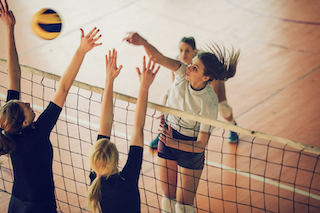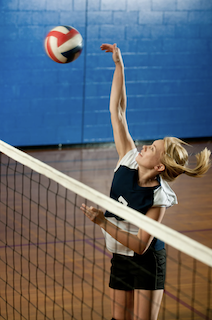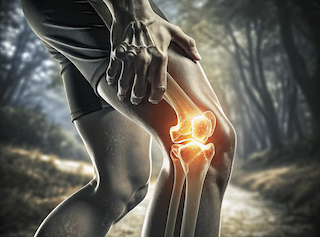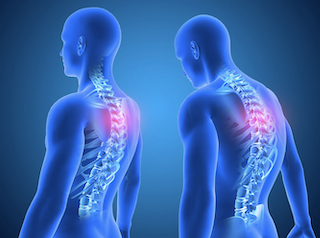バレーボール
コンディショニング
プログラム
Volleyball
Conditioning
Program
バレーボールは、爆発的なジャンプ、素早い方向転換、そして繰り返されるオーバーヘッド動作が求められる高強度スポーツです。その結果、肩・膝・腰に大きな負担がかかり、急性外傷だけでなく慢性的なオーバーユース障害のリスクも高まります。
エビデンスに基づいたコンディショニングプログラムは、筋力・パワー・敏捷性の向上だけでなく、傷害予防や長期的な競技力の維持に不可欠です。本記事では、バレーボール選手向けに科学的根拠に基づいたコンディショニング運動プロトコルを紹介し、アスリート、理学療法士、アスレティックトレーナーがパフォーマンスを最適化し健康を守るための実践的戦略を提示します。
< Evidence-Based Practice >
- バレーボール選手のパフォーマンス向上と傷害予防には、全身コンディショニング運動プログラムが極めて重要です。
- システマティックレビューでは、筋力トレーニングとプライオメトリクストレーニングを組み合わせることで、垂直跳びの高さ、加速力、全体的なフィジカルコンディショニングが一貫して改善することが示されています(Hikmad Hakimら, 2025; Jarionoら, 2024)。
- また、プライオメトリクストレーニングは、女性バレーボール選手のスプリント、ジャンプ、スロー能力の向上において、スキルベースのコンディショニングよりも効果的であることが報告されています(Gjinovciら, 2017)。
- 体幹安定性プログラムは、機能的動作やバランスを有意に改善し、傷害リスクを低減します(Songら, 2020)。
- さらに、筋力トレーニングプログラムは、スピード、敏捷性、持久力、パワーなど複数の身体能力を向上させます(Vishnevskyi & Storozhenko, 2023)。
- コーチや選手は、バレーボールのパフォーマンスと傷害予防におけるストレングス&コンディショニングの重要性を認識している一方で、専門知識の不足、時間、施設、機材の制約といった実施上の課題も存在します(Weldonら, 2021)。
- エビデンスは、統合的かつ個別化され、さらにポジション特異的なコンディショニングアプローチが、バレーボール競技力の最適化に有効であることを支持しています(Rebeloら, 2025)。

< Exercises & Trainings >
- Upper Body
- ベンチプレス – Bench Press
- ラテラル・ショルダーレイズ – Lateral Shoulder Raises
- プルアップ – Pull Ups
- バイセプスカール – Biceps Curls
- トライセプスカール – Triceps Curls
- 肩のインナーマッスル: W – Rotator Cuff: W
- ケトルベル・プレスアップ – Kettlebell Press Ups
- Lower Body
- バックスクワット – Back Squat
- デッドリフト – Deadlift
- ブルガリアン・スプリットスクワット – Bulgarian Split Squat
- シングルレッグ・RDL – Single-Leg RDL
- モンスターウォーク – Monster Walk
- カーフレイズ – Calf Raises
- Core/Trunk
- ロシアンツイスト – Russian Twist
- ジャックナイフ – Jack Knife
- ウッドチョッパー – Woodchopper
< Reference >
- Hakim, Hikmad, Sahabuddin Sahabuddin, and Andi Ridwan. “Physical Conditioning Programs in Volleyball: A Systematic Review of Methods, Outcomes, and Emerging Trends.” Journal of Physical Education and Sport Pedagogy 5, no. 1 (2025): 29–38. https://doi.org/10.17509/jopes.v5i1.83597.
- Jariono, Gatot, Nurhidayat, Pungki Indarto, Vera Septi Sistiasih, Haris Nugroho, and Uzizatun Maslikah. “Physical Activity Training Methods to Improve the Physical Condition of Volleyball Players: A Systematic Review.” Physical Education Theory and Methodology 24, no. 1 (2024): 118–29. https://doi.org/10.17309/tmfv.2024.1.15.
- Gjinovci, Bahri, Kemal Idrizovic, Ognjen Uljevic, and Damir Sekulic. “Plyometric Training Improves Sprinting, Jumping and Throwing Capacities of High Level Female Volleyball Players Better Than Skill-Based Conditioning.” Journal of Sports Science & Medicine 16, no. 4 (2017): 527–35.
- Song, In-Yeong, Yeon-Soon Seo, and Yang-Hoon Kang. “Effects of 10-Week Body Stability Exercise Program on Functional Movement and Body Balance of Middle School Volleyball Players.” The Journal of Korean Physical Therapy 32, no. 4 (2020): 203–9. https://doi.org/10.18857/jkpt.2020.32.4.203.
- Vishnevskyi, Mykola, and Andriy Storozhenko. “Increasing the Level of Physical Fitness of Players Men’s Student Volleyball Team.” Human and Nation’s Health 1, no. 1 (2023): 7–20. https://doi.org/10.31548/humanhealth.1.2023.7.
- Weldon, Anthony, Jason T. S. Mak, Sing T. Wong, Michael J. Duncan, Neil D. Clarke, and Chris Bishop. “Strength and Conditioning Practices and Perspectives of Volleyball Coaches and Players.” Sports 9, no. 2 (2021): 28. https://doi.org/10.3390/sports9020028.
- Rebelo, André, João Valente-dos-Santos, Inês G. Pires, Inês Arrais, João R. Pereira, and Anthony N. Turner. “Strength and Conditioning for Volleyball: A Review.” Strength & Conditioning Journal, ahead of print, March 13, 2025. https://doi.org/10.1519/SSC.0000000000000895.




